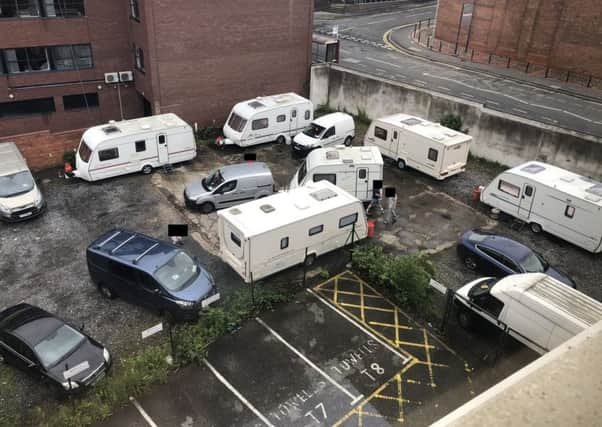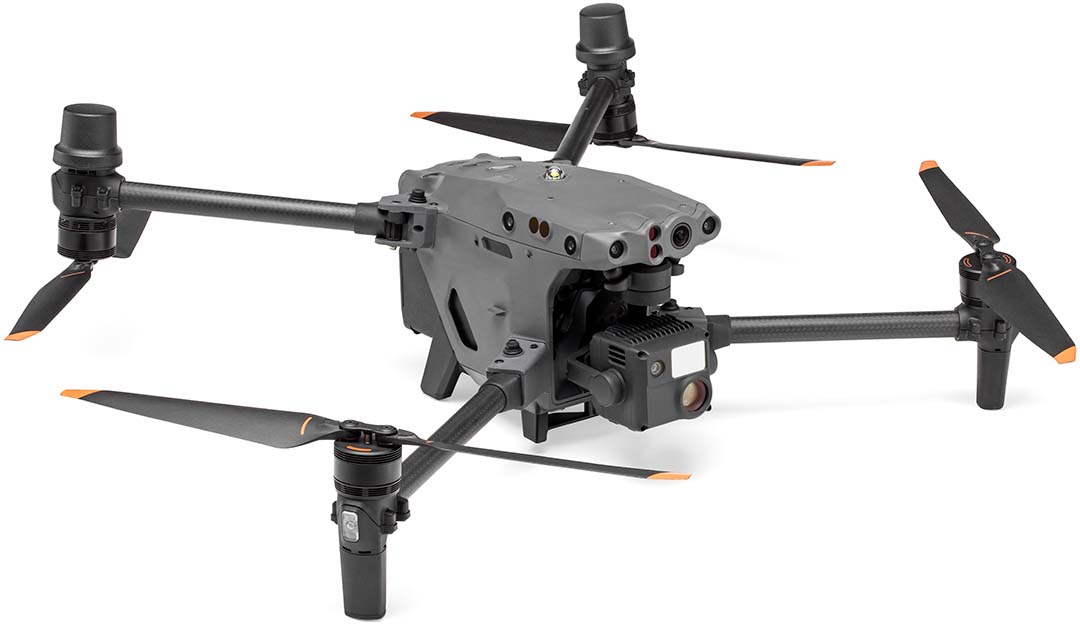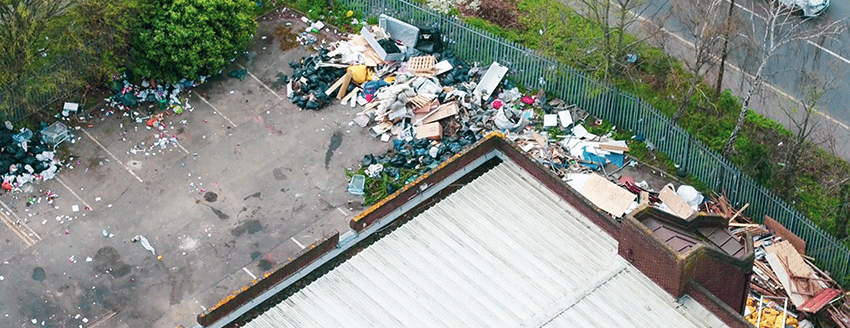
Background
In a recent incident, a group of travellers illegally occupied a secure compound at a former office site of a large supermarket retail chain. This occupation led to significant disruptions and posed various challenges, including environmental damage and customer intimidation.
The travellers engaged in illegal activities such as disposing of rubbish and receiving van loads of waste, which they illegally dumped at the site. Their aggressive behavior towards the superstore’s customers forced the store to reduce its 24-hour operating schedule to daylight hours only, aiming to minimise intimidation and ensure the safety of customers.
Despite being served with an order to vacate the premises, the travellers remained on-site, with no evidence of leaving voluntarily. This situation escalated concerns for the supermarket chain, requiring an innovative approach to address the illegal occupation effectively.

Objective
Iprosurv, a leading provider of drone surveillance services, was tasked with gathering evidence for the prosecution of the illegal occupation. The objectives included:
- Capturing high-definition images and video evidence of the vehicles and individuals involved in illegal dumping.
- Monitoring the site for any signs of vacation by the travellers.
- Documenting environmental damage caused by the illegal activities.
- Assisting in the peaceful resolution of the occupation without direct confrontation.

Deployment and Operations
Iprosurv deployed a team to the site, establishing a discreet operational base out of view from the traveller encampment. The drone, equipped with state-of-the-art high-definition cameras and zoom capabilities, was prepared for surveillance missions. The drone was launched whenever a vehicle approached the site, aiming to dump rubbish illegally.
The presence of the drone served as a deterrent, causing many vehicles to turn around and leave without dumping waste. This tactic effectively prevented further environmental damage and illegal dumping activities during the operation.
The drone surveillance continued for approximately eight hours, during which crucial information was gathered, including vehicle and caravan details and documentation of environmental damage. As the operation progressed, drone footage observed the travellers beginning to hitch their caravans to vehicles, signaling the start of their departure from the site.
The drone remained on-site throughout the vacation process, ensuring comprehensive monitoring and capturing detailed images and video evidence of the site post-occupation. This data was crucial for subsequent prosecutions and assessing the environmental impact of the illegal activities.
